Call +(254) 703 030 000 / 751 483 999 / 721 704 777
- Home
- Electrical
- Wire Cable Management
- Cable Ties Mounts
- Hook And Loop Cable Ties
.....Read More
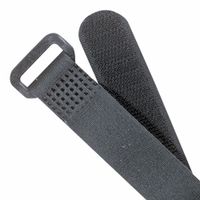
Buckle Hook-and-Loop Cable Ties
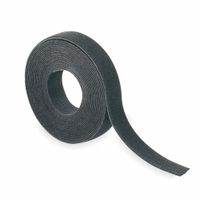
Cut-To-Length Hook-and-Loop Cable Tie Rolls
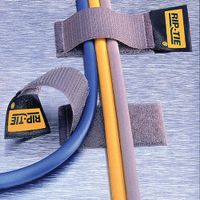
Mountable Hook-and-Loop Cable Ties

Perforated Hook-and-Loop Cable Tie Strips
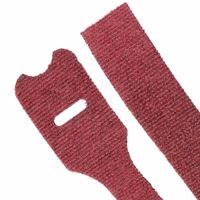
Plenum Rated Hook-and-Loop Cable Ties
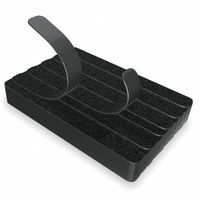
Pre-Cut Hook-and-Loop Cable Tie Strips

Slotted Hook-and-Loop Cable Ties

Tethered Hook-and-Loop Cable Ties
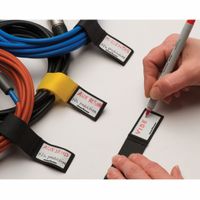
Write-On Hook-and-Loop Cable Ties
Frequently Asked Questions
What are hook-and-loop cable ties used for?
Hook-and-loop cable ties are versatile fastening solutions used primarily for organizing and managing cables and wires. They consist of two components: a hook side and a loop side, which adhere to each other when pressed together, allowing for easy attachment and detachment. These ties are commonly used in various settings due to their reusability, adjustability, and gentle grip.
In home and office environments, hook-and-loop cable ties help in tidying up computer cables, phone chargers, and other electronic device cords, reducing clutter and preventing tangling. They are ideal for bundling cables behind desks, entertainment centers, or workstations, ensuring a neat and organized appearance.
In professional settings, such as data centers and server rooms, these ties are crucial for managing large volumes of network cables, power cords, and other wiring systems. They help maintain an orderly setup, which is essential for efficient troubleshooting and maintenance. The ability to easily adjust and reposition the ties without damaging the cables is particularly beneficial in these environments.
Hook-and-loop cable ties are also used in audio-visual setups, where they secure cables for microphones, speakers, and lighting equipment, ensuring a clean and safe stage or studio environment. In industrial applications, they are employed to manage hoses, wires, and other components, contributing to workplace safety and efficiency.
Additionally, these ties are popular in DIY projects, gardening, and crafting, where they can bundle tools, secure plants, or organize materials. Their gentle hold makes them suitable for delicate items, unlike traditional plastic zip ties that can cause damage.
Overall, hook-and-loop cable ties offer a practical, reusable, and adjustable solution for cable management and organization across various applications.
How do you use hook-and-loop cable ties?
To use hook-and-loop cable ties, follow these steps:
1. **Select the Right Size**: Choose a hook-and-loop cable tie that is appropriate for the size and number of cables you need to bundle. They come in various lengths and widths.
2. **Gather Cables**: Collect the cables you want to organize. Ensure they are untangled and aligned parallel to each other for a neat bundle.
3. **Position the Tie**: Place the cable tie under the cables at the point where you want to secure them. Ensure the hook side (rough) is facing up and the loop side (soft) is facing down.
4. **Wrap the Tie**: Bring the end of the tie over the cables and through the slot or loop at the other end of the tie, if it has one. This will create a loop around the cables.
5. **Secure the Tie**: Pull the end of the tie to tighten it around the cables. Ensure it is snug but not so tight that it damages the cables.
6. **Fasten the Hook and Loop**: Press the hook side against the loop side to secure the tie. The hook-and-loop mechanism will hold the tie in place.
7. **Adjust as Needed**: If you need to add or remove cables, simply peel the hook-and-loop apart, adjust the cables, and refasten the tie.
8. **Trim Excess (Optional)**: If the tie is too long, you can trim the excess length for a cleaner look.
9. **Reuse**: Hook-and-loop cable ties are reusable. To remove, simply peel the hook-and-loop apart and store the tie for future use.
These ties are ideal for managing cables in home offices, entertainment centers, and server rooms due to their flexibility and reusability.
Are hook-and-loop cable ties reusable?
Yes, hook-and-loop cable ties are reusable. These ties are designed with a two-part fastening system consisting of tiny hooks on one side and loops on the other. When pressed together, the hooks catch the loops, creating a secure bond. This mechanism allows the ties to be easily opened and closed multiple times without losing their effectiveness.
The reusability of hook-and-loop cable ties makes them an environmentally friendly and cost-effective solution for organizing cables and wires. Unlike traditional plastic zip ties, which are single-use and must be cut to be removed, hook-and-loop ties can be adjusted, repositioned, and reused as needed. This flexibility is particularly useful in dynamic environments where cable configurations frequently change, such as in data centers, home offices, or entertainment setups.
Additionally, hook-and-loop cable ties are gentle on cables, reducing the risk of damage or abrasion. They are available in various lengths, widths, and colors, allowing for easy identification and organization of different cable groups. Their soft material also makes them suitable for bundling delicate or sensitive cables, such as fiber optics.
Overall, the reusability, adjustability, and gentle nature of hook-and-loop cable ties make them a versatile and practical choice for cable management.
What are the benefits of using hook-and-loop cable ties?
Hook-and-loop cable ties offer several benefits:
1. **Reusability**: Unlike traditional plastic zip ties, hook-and-loop ties can be easily opened and closed, allowing for repeated use. This makes them cost-effective and environmentally friendly.
2. **Adjustability**: They can be adjusted to fit various bundle sizes, providing flexibility in organizing cables of different thicknesses and lengths.
3. **Gentle on Cables**: The soft material prevents damage to cables, reducing the risk of pinching or cutting into the insulation, which can occur with plastic ties.
4. **Ease of Use**: They are simple to apply and remove, requiring no special tools. This ease of use is beneficial for quick adjustments and reorganizations.
5. **Versatility**: Suitable for a wide range of applications, from home and office cable management to industrial and networking environments.
6. **Reduced Risk of Over-tightening**: The design prevents over-tightening, which can damage cables and affect performance.
7. **Organizational Aid**: Available in various colors, they help in color-coding and organizing cables, making it easier to identify and manage connections.
8. **Durability**: Made from durable materials, they withstand repeated use and environmental factors better than some alternatives.
9. **Safety**: They eliminate sharp edges and the need for cutting tools, reducing the risk of injury during installation and removal.
10. **Aesthetic Appeal**: They provide a neat and tidy appearance, enhancing the visual organization of cable setups.
Overall, hook-and-loop cable ties are a practical solution for efficient, safe, and organized cable management.
How do you choose the right hook-and-loop cable tie?
To choose the right hook-and-loop cable tie, consider the following factors:
1. **Purpose and Application**: Determine the specific use, such as organizing cables, securing items, or bundling wires. This will guide the required strength and durability.
2. **Size and Length**: Measure the diameter of the cables or items to be bundled. Choose a tie that is long enough to wrap around with some overlap for secure fastening.
3. **Strength and Load Capacity**: Assess the weight and tension the tie needs to withstand. Opt for heavy-duty ties for larger or heavier bundles.
4. **Material Quality**: Look for high-quality materials that offer durability and resistance to wear and tear. Nylon is a common choice for its strength and flexibility.
5. **Reusability**: If frequent adjustments are needed, ensure the ties are designed for multiple uses without losing grip.
6. **Environment**: Consider environmental factors such as temperature, humidity, and exposure to elements. Some ties are UV-resistant or designed for extreme temperatures.
7. **Color and Aesthetics**: Choose colors that match the environment or help in color-coding for easy identification and organization.
8. **Brand and Reviews**: Research reputable brands and read customer reviews to ensure reliability and performance.
9. **Cost**: Balance quality with budget. While cheaper options may be tempting, investing in higher-quality ties can offer better longevity and performance.
10. **Ease of Use**: Ensure the ties are easy to apply and remove, especially if frequent adjustments are necessary.
By considering these factors, you can select the most suitable hook-and-loop cable tie for your specific needs.
Can hook-and-loop cable ties be used outdoors?
Yes, hook-and-loop cable ties can be used outdoors, but there are several factors to consider to ensure their effectiveness and longevity. These ties are made from materials like nylon or polyester, which can withstand various environmental conditions. However, exposure to elements such as UV rays, moisture, and temperature fluctuations can affect their durability.
For outdoor use, it's important to select hook-and-loop ties specifically designed for such conditions. These ties often have UV-resistant properties to prevent degradation from sunlight. Additionally, they may be treated to resist mold and mildew, which can be a concern in humid or wet environments.
When using hook-and-loop ties outdoors, consider the following:
1. **Material Quality**: Choose ties made from high-quality, weather-resistant materials. Look for those labeled as UV-resistant or designed for outdoor use.
2. **Environmental Conditions**: Assess the specific conditions where the ties will be used. In areas with extreme temperatures or high humidity, the ties may wear out faster.
3. **Load and Stress**: Ensure the ties are not subjected to excessive load or stress, as this can weaken the hook-and-loop mechanism over time.
4. **Regular Inspection**: Periodically check the ties for signs of wear or damage. Replace them if they show signs of fraying, loss of adhesion, or other deterioration.
5. **Application**: Use the ties in applications where they are not constantly exposed to harsh conditions. For example, securing cables under a shaded area or using them in conjunction with other protective measures can extend their lifespan.
In summary, while hook-and-loop cable ties can be used outdoors, selecting the right type and taking precautions can enhance their performance and durability in outdoor settings.
How do you clean hook-and-loop cable ties?
To clean hook-and-loop cable ties, follow these steps:
1. **Detach and Shake Off Debris**: Remove the cable ties from cables or objects. Shake them to dislodge loose dirt and debris.
2. **Brush Off Dirt**: Use a soft-bristled brush or an old toothbrush to gently brush the hook-and-loop surfaces. This helps remove embedded dirt and lint.
3. **Wash with Soap and Water**: Fill a basin with warm water and add a mild detergent. Submerge the cable ties and gently agitate them to loosen dirt. Use your fingers or a soft brush to scrub stubborn areas.
4. **Rinse Thoroughly**: Rinse the cable ties under running water to remove soap residue. Ensure all detergent is washed away to prevent any sticky residue.
5. **Dry Completely**: Lay the cable ties flat on a clean towel and pat them dry. Allow them to air dry completely before reusing to prevent mold or mildew.
6. **Inspect and Recondition**: Once dry, inspect the hook-and-loop surfaces. If the hooks are bent or clogged, use a fine comb or another brush to realign and clean them.
7. **Store Properly**: Store the cleaned cable ties in a dry, dust-free environment to keep them in good condition.
By following these steps, you can maintain the effectiveness and longevity of your hook-and-loop cable ties.